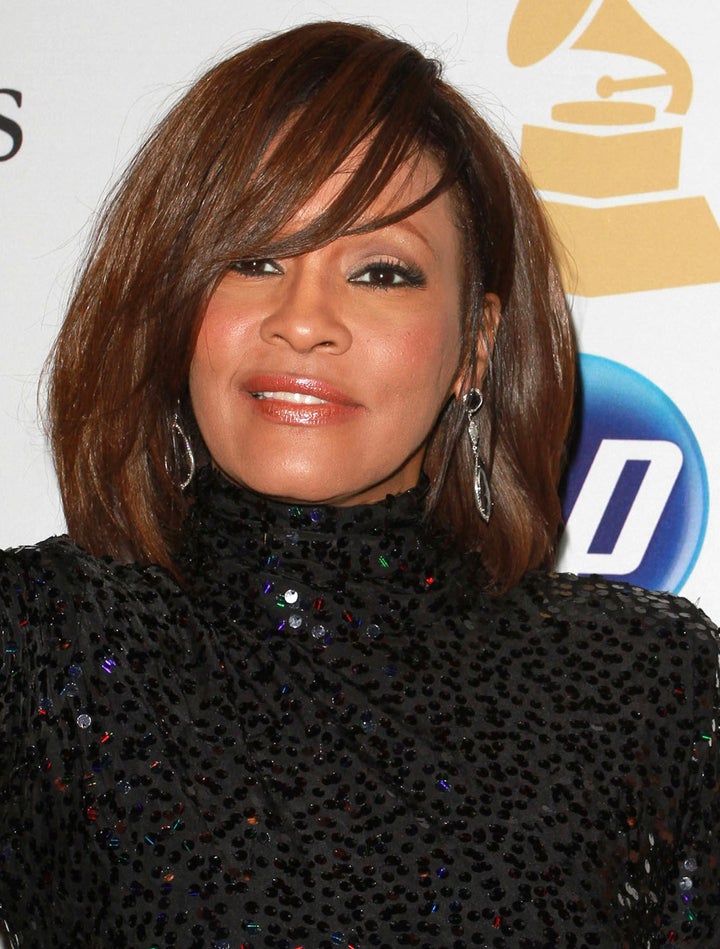
Whitney Houston's mother brought her daughter home to the New Hope Baptist Church in Newark on February 18 to be memorialized by her friends and family; remembered for when her voice reached the heavens like no other, and when it broke down, ravaged by drugs, hard living and bad choices.
Today, February 19, she is being laid to rest for eternity in my home, Westfield, NJ, where I grew up, and in the same cemetery where my parents and many friends are buried. Houston is being interred in the same plot with her father, John. Though I doubt Ms. Houston spent much time in Westfield, other than to visit her father's grave, I will imagine she asked to rest next to him because he was the only man she really trusted, despite his three marriages, and who provided a home for her with all the emotional trappings that "home" represents.
Fairview cemetery in "Colonial Westfield," is only about 14 miles southwest of Houston's real childhood home of Newark, but the real distance is far greater.
The Newark of Houston's youth, and its present, is one of America's poster cities for urban decay and economic challenges. The city has never recovered from the 1967 riots that destroyed buildings and chased out most of the last upwardly mobile middle-class families who lived there. The Houston's were among the exodus, moving to nearby East Orange when Houston was just four years old. Its poor schools, high crime rate and generally gray, desolate interiors, salted with a few green-shoot gentrified neighborhoods and solid ethnic enclaves, remains stubbornly grim despite being just a tantalizing 15 to 20 minute NJ Transit ride from Manhattan's Penn Station.
Westfield, on the other hand, has often been cited as one of the best towns in America to live, and grow up in. I can attest to the latter. The independent corner stores, ice cream parlors, men's clothing stores and drug stores that were my youth have been almost entirely replaced by chain stores. My old barber, Figaro's, recently had a fire. But when I had my 30th High School reunion last November, we had near 200 baby boomers turn out, reflecting on the good-ol' town that shaped us.
The town was long known for the "Three Ps," -- Presbyterian, Prudential and Princeton. It was in those three institutions that you could find most of the economic, social and political power in Westfield for decades. Today, the town is somewhat more tolerant of Democrats than in the Eisenhower-Nixon-Reagan eras, but not much.
It is not, nor has it ever been, a multi-cultural town. The last census shows it to be 90% white, less than 4% black. And 4% Asian. It is definitely more tolerant, despite its still very white population, of people of color. Old prejudices have mostly been buried in Fairview. Both President Bushes made Westfield stops in their campaigns in one of the strongest, and most reliably Republican strongholds in the state.
It's unclear to me why John Houston is buried there. His obituary shows no ties to Westfield. But maybe, like my Aunt Eleanor, he attended a burial there and liked it for his last resting place, despite having never lived in the town.
There is one black Baptist church in town, Bethel Baptist Church, where the ladies still wear fabulous Sunday hats and spirituals are sung.
Fairview cemetery is the only place in Westfield to be buried these days. There is only one other graveyard in town, a tiny, forlorn patch of relics from Colonial times, across the street from the majestic white steepled Westfield Presbyterian Church.
Westfield is almost always a calm, steady, consistent, predictable small town. But Westfield, and thus Fairview, also has its share of notables and notorious who call it their last address: Kool and The Gang co-founder Claydes Charles Smith; the family of murderer John List, Westfield residents when the horrible tragedy took place in 1971; Bob Wunderle, the Path Mark grocery store executive killed by organized crime members; Jeffrey Bauer, publisher of the Westfield Leader whose estranged wife shot him in his downtown office in 1996 and then turned the gun herself.
But that list sells Fairview, and Westfield, well short. There are veterans from the Civil War, Spanish-American War, World War I, World War 2, Vietnam and both Iraq wars resting there. There are teachers, students, ministers, druggists, barbers, waiters, city-council members, librarians, mothers, fathers, sons, daughters, babies, drunk-driving victims: the spine, hopes, pride and regrets of a town that has shaped many lives for both good and bad.
To be sure, too, there are hundreds buried across its 105 acres who shared Houston's tragic addictions. A former neighbor of mine is one, a grand old-school gentleman who paid me to cut his grass and shovel his snow, and gave my pals and me ice-box cookies from his back stoop, but also had a weakness for Jack Daniels that chewed him up from the inside out. A couple of classmates of mine are there too, along with the dashed hopes and melancholy of parents who still regularly visit their graves. And there is a lady I knew well, now in Fairview, who checked herself into rehab at age 83 to beat the alcoholism that she managed to keep caged up the last four years of her life, proving that it's never too late to slay the dragon.
No, I don't know why the Houstons are buried in my home town not far from my parents. But if they want to call it home, as I do, despite now living out of state, then I can understand why. The town is lovely. The people are imperfect. But the company there is very good.